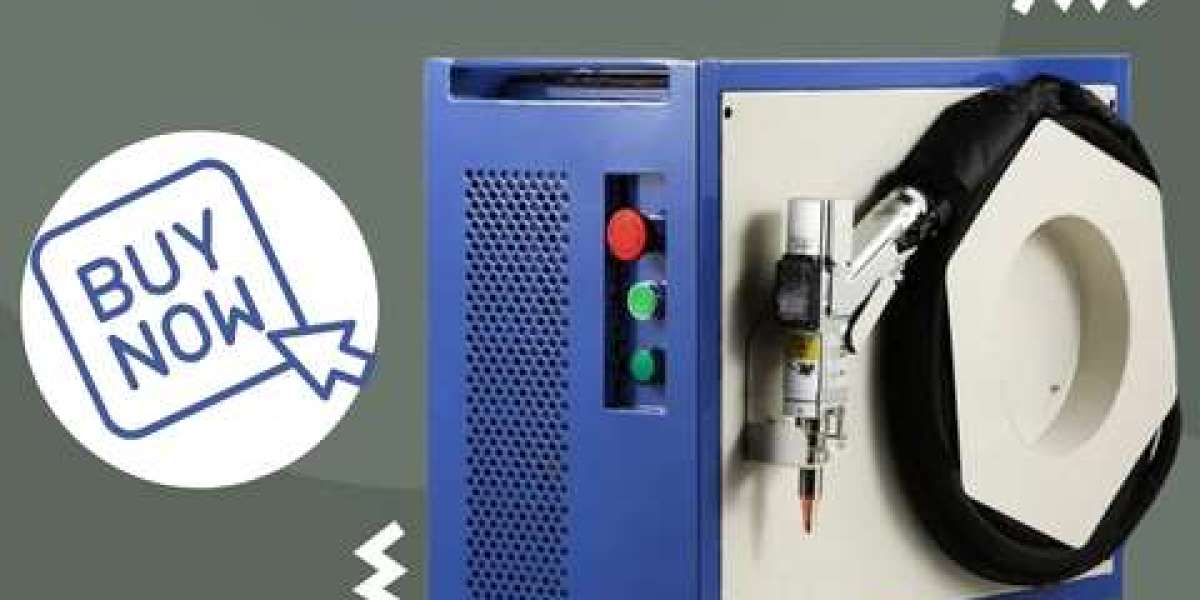Let’s dive deep into the science, applications, real-world use cases, and economic rationale behind the rise of laser rust removal machine.
What Is a Laser Rust Removal Machine?
A laser rust removal machine is a highly precise tool that uses concentrated laser beams to ablate corrosion, oxides, and other contaminants from metal surfaces. Rather than grinding or chemically treating the surface, it relies on a controlled burst of laser energy to remove only the top layer of rust without damaging the underlying metal.
The key lies in the differential absorption of laser energy: rust (iron oxide) absorbs laser energy differently than clean metal, allowing targeted removal. This interaction happens in nanoseconds and doesn’t require contact, chemicals, or abrasives—making the process clean and precise.
How Does the Process Work?
The laser beam is emitted from a fiber laser source and transmitted via a cable to a hand-held or automated scanner head. As the beam strikes the rusted area, it rapidly heats and vaporizes the oxide layer without heating the substrate significantly.
Depending on power settings and laser frequency, this process can be tuned to remove different levels of corrosion—from light surface rust to deep pitting. The machine can also be used to remove paint, grease, and other surface contaminants.
This process is known as laser ablation, and it’s not only effective but also consistent and repeatable. Unlike human-operated grinders or chemical applications that vary with each operator or environment, laser cleaning remains stable.
Applications Across Industries
The versatility of a laser rust removal machine has led to its adoption across a wide range of industries:
Automotive restoration: Ideal for removing rust from engine blocks, body frames, and brake systems without damaging parts.
Shipbuilding and maritime: Effective in removing salt-induced corrosion from hulls and decks in shipyards.
Aerospace: Perfect for precision rust removal on expensive aircraft components that can’t be exposed to abrasive or chemical treatments.
Railways: Cleaning tracks, joints, and mechanical components without disassembly.
Oil and Gas: De-rusting pipelines and rig structures in hard-to-access or high-risk zones.
Historical artifact restoration: Safely removing corrosion from cultural heritage items without affecting integrity.
Safety and Cleanliness: A Game-Changer
Unlike traditional methods that generate dust clouds, flying debris, or chemical fumes, a laser rust removal machine creates minimal waste. The ablated rust is vaporized or reduced to small particles that are often captured by an integrated fume extraction system.
For environments where worker safety and cleanliness are critical—such as food production facilities, aerospace manufacturing lines, or clean rooms—laser cleaning introduces a level of control that older techniques simply can't offer.
Additionally, it removes the need for wearing intensive PPE like respirators or chemical suits. An operator may only require protective eyewear and gloves, reducing fatigue and increasing productivity.
Precision Matters in Modern Industry
In the age of micro-tolerances and digital manufacturing, the margin for error has shrunk significantly. One scratch or excess material removal can lead to part failure or assembly misalignment. Traditional rust removal methods, such as grinding or sandblasting, often risk damaging the base material—especially softer metals like aluminum or composite alloys.
A laser rust removal machine excels in these scenarios. Its power and scanning parameters can be adjusted to ensure millimeter-level control. Whether you're working on a delicate aircraft component or a precision mold, you can clean without affecting shape, weight, or alignment.
Real-World Success Story: Automotive Rebuild Shop
In a small restoration garage in Ohio, a team of engineers faced recurring challenges with cleaning rust from vintage car parts. Previously, they used sandblasting, but this led to part warping and frequent equipment maintenance due to abrasive residue.
After investing in a 1000W laser rust removal machine, the shop saw a 60% reduction in prep time, a significant drop in consumable usage (no more sand!), and better preservation of original car parts. Their reputation for quality grew, and they began offering laser cleaning services to other garages—creating a new revenue stream.
This isn't just an isolated case. Similar outcomes have been reported in Europe and Asia, especially in countries leading manufacturing innovation like Germany, Japan, and South Korea.
Cost Consideration and ROI
One of the common hesitations is the initial price tag. A laser rust removal machine is an investment—often ranging from $10,000 to $50,000 depending on power, build quality, and additional features.
But that number doesn’t tell the full story.
Traditional methods carry recurring costs: sand, chemicals, brushes, protective gear, frequent downtime, and extensive cleanup. Add labor costs and potential reworks due to damage, and the equation begins to favor lasers.
In a study conducted by a medium-scale manufacturing unit, the switch to laser rust removal led to an average annual saving of $18,000 in consumables and waste disposal alone. The machine paid for itself in under 2 years—and that’s not including the added revenue from faster turnaround and higher quality output.
Environmental Responsibility
As environmental regulations become stricter globally, many factories face increased pressure to reduce chemical waste and airborne particles. Laser rust removal machines help meet these standards effortlessly.
No chemicals mean no disposal fees. No abrasive media means no airborne silica or heavy metals. This technology aligns well with ISO 14001 certification and other green manufacturing standards.
Governments in some countries have even begun offering subsidies or tax relief for businesses adopting laser cleaning methods to reduce their environmental impact.
Portability and Field Use
Modern laser rust removal machines aren’t just for factory floors. Compact, lightweight, and mobile-friendly models now exist, with ergonomic handheld units and optional battery support. These models are especially useful in field maintenance for:
Railroads
Offshore platforms
Wind turbines
Bridges and construction sites
These portable solutions have become the go-to equipment for mobile maintenance teams who require speed, accuracy, and reliability on the go.
Operator Training and Ease of Use
While it might sound like a complex piece of equipment, a laser rust removal machine is surprisingly user-friendly. Basic operator training typically takes less than a day. Interfaces are often touchscreen-based, with preset cleaning modes for various metals and surface types.
Operators no longer need years of experience with chemicals or mechanical tools—just basic familiarity with laser settings and safety measures.
That means companies can train new staff quickly and reduce dependency on highly skilled specialists for every cleaning job.
Final Thoughts
Laser rust removal machine are redefining how industries approach surface cleaning and corrosion control. With unmatched precision, minimal environmental impact, lower operating costs, and increasing availability of portable models, it’s no longer a question of if your business should consider laser rust removal—but when.
In a world driven by efficiency, safety, and sustainability, embracing laser technology could be the competitive edge your operations need. Whether you're restoring a classic car, maintaining an offshore rig, or preparing parts for aerospace assembly, laser rust removal machines offer a forward-thinking, future-ready solution.


